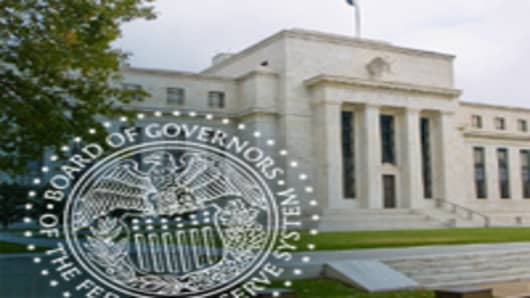The Obama administration and House Democrats have made major changes to proposed legislation giving the federal government new powers to wind down the businesses of too-big-too-fail financial firms.
The revised legislation, which is now being finalized, will be made public late today or early tomorrow, according to sources.
The key changes in what is known as resolution authority affect compensation of creditors, shareholders and management, as well as the role of the Federal Reserve in handling such too-big-to-fail cases, according to a senior Congressional staffer.
“This will be a significant shift," said the staffer.
Key Changes
In particular, the government would have more latitude in what compensation creditors and shareholders get in out-of-court settlements, similar to what happened to bondholders in the General Motors and Chrysler Chapter 11 cases.
The Fed would play less a role in handling firms that pose a systemic risk to the economy, giving more authority to a council composed of several regulatory agencies.
“The council is being beefed up to be a policy making [entity}, explained the source, and would define such issues as what constitutes a systemic institution and how it is going to be wound down.
The council membership's is not expected to be changed. It currently includes the Fed, as well as as the Treasury and the FDIC.
The resolution authority is one of a handful of key measures in a sweeping package of regulatory reform working its way through Congress. Three of those measures have already been approved in the House.
The powers could be applied to an major firm, including an insurer, such as AIG and Citigroup and Bank of America.
The other key change in the bill is meant to give the government enough control that it could essentially dictate and impose terms on creditors, such as defining the return on their investment.
It “could get them to take cuts.” said an industry executive. "It's a cram down, if you will, for bondholders. It's a paradigm shift."
Shareholders, meanwhile, would probably lose virtually everything, as is usually the case in bankruptcy court, and management would be removed.
Sources say the changes are intended to provide greater protection for taxpayers, amid a growing outcry over the costs of bailing out private companies. They also reflect widespread criticism of the Fed’s handling of the financial crisis and its revised role in the new regulatory framework being developed.
”We're not too sure it’s a good idea having the Federal Reserve being the macro everything,” said the Congressional source.
Staffing for the resolution process would be handled by the FDIC—which now fulfills a similar function in dealing with troubled commercial banks--not the Fed. The council, however, would not have any rule-making authority.
General Support
Senators Bob Corker (R-Tenn.) and Mark Warner (D-Va.) have already introduced resolution authority legislation, on a stand-alone basis, saying it clearly fills an existing gap, unlike other parts of the reform package, which may or may not be needed.
Treasury Secretary Timothy Geithner will testify on the changes at a House Financial Services hearing Thursday. Althouight, the witness list has yet to be made public, at least one major industry representative will also testify.
That panel, chaired by Rep. Barney Frank (D-Mass.), is expected to begin next week, having recently completed committee work on other components of the package, such as derivatives regulation and the creation of a consumer financial protection agency.
The timing is not coincidental. Rep Frank's preference is to have changes in legislative language made public three full days before a public hearing.
The White House and leading Democrats in the House are thought to be in agreement on the changes. FDIC Chairman Shelia Bair Monday referred to broad agreement in government over the resolution authority powers. Bair, incidentally, has sought for a greater FDIC role in the process.
Some analysts, as well as Washington insiders, say the administration wants to look tough on the financial sector, following recent disclosures that firms, such as Goldman Sachs , which received and later returned bailout funds are expected to pay large bonuses to executives and traders just one year after the crisis threatened the nation’s financial system.
"We are reducing taxpayer exposure," said one source.
Concerns Remain
That may be in the eye of the beholder. Many Republcians are opposed to the new authority altogether, saying it creates a permanent bailout mechanism. Instead, they have proposed an addition to the bankruptcy code, addressing financial firms and limiting the damaging chain reaction that occured with Lehman Brothers.
Some Democrats are also wary of the new powers. Rep. Brad Sherman of California, who twice voted against the TARP, says "resolution authority and bailout authority are two different things."
Though Sherman said he would reserve full judgement until the changes are unveiled, he's worried that a poorly constructed bill will "provide the creditors and counter parties with an implicit government guarantee paid for by the taxpayers" and that the 20 biggest firms, by being seen as too big too fail, would enjoy a lower costs of capital, creating an unfair market advantage.
Sherman and other's would like to see clear protections and in that way he wouldn't rule out the creation of an FDIC-like insurance fund, which, along with a government backstop containing adequate reserves, would cover the costs.
(The White House is supposedly considering some kind of insurance component, an idea which was proposed and abandoned during the early days of the TARP debate.)
Otherwise, the resolution mechanism is the equivalent of a "bankruptcy judge on steroids."



